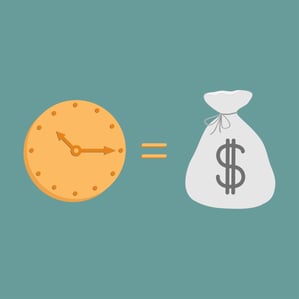Are These Time Constraints Destroying Your Office Workflow?
In your practice, time is money. The need to optimize your office workflow to allow more patients to move through your practice results in more claims and more revenue. When it comes to looking at ways to improve your office workflow, your practice must first look at the inefficiencies that are keeping your practice from successfully optimizing your workflow and maximizing your patient schedule.
This post highlights some of the more common inefficiencies that an optometry practice faces.
The Top Office Workflow Inefficiencies And How To Fix Them
Scheduling Appointments Over The Phone
When your front office staff has to pick up the phone to answer calls from patients scheduling appointments, or having to call patients to confirm appointments, they are being taken away from helping the patients in your practice move through their appointment.
By providing your practice with a patient portal that allows your patients to schedule their appointments through the web, at their own time, you take away the need for your front office to field those phone calls. If the patient portal syncs with your practice management and EHR software, then you will be able to free up your front office substantially.
Reducing phone calls even further, connecting your EHR and practice management tool with a patient recall system will decrease the volume of calls your staff will have to send out to remind patients of their appointments; freeing them to focus only on the patients physically in your practice.
Manually Entering Patient Data
Collecting pre-appointment paperwork can be a huge time constraint if done improperly. Waiting until the patient is in your office to collect the paperwork adds to the overall exam time and reduces the number of patients that your practice can see.
To cut down on waiting room times, have your patients fill out the pre-appointment paper work through their patient portal. This way they can complete it on their own time. And, when they come to your office, your technician can quickly begin the pre-exam tests.
Additionally, selecting EHR software with clinical decision support will reduce the manual data-entry during the exam by populating fields with diagnosis, treatment, orders, testing, and patient education material based on best practices.
Switching Between Software
Different logins, different applications, and different system requirements will complicate your workflow. To help your practice avoid updating multiple software solutions, learn different interfaces, and keep up with dozens of passwords, identify an EHR software that comes preloaded with the embedded tools your practice needs to get the job done.
Calling The Pharmacy
Calling the pharmacy to prescribe medication may seem like it is a necessary task, but in reality, this is an item that can be largely eliminated. Using an embedded ePrescribing tool can make it easier for you to pull patient prescription data to update the medications and allergies you have in each patient medical records.
For more information on how you can eliminate time-consuming tasks from your office workflow, download the “Practice Efficiency” eBook.
Originally Published in February 2017

